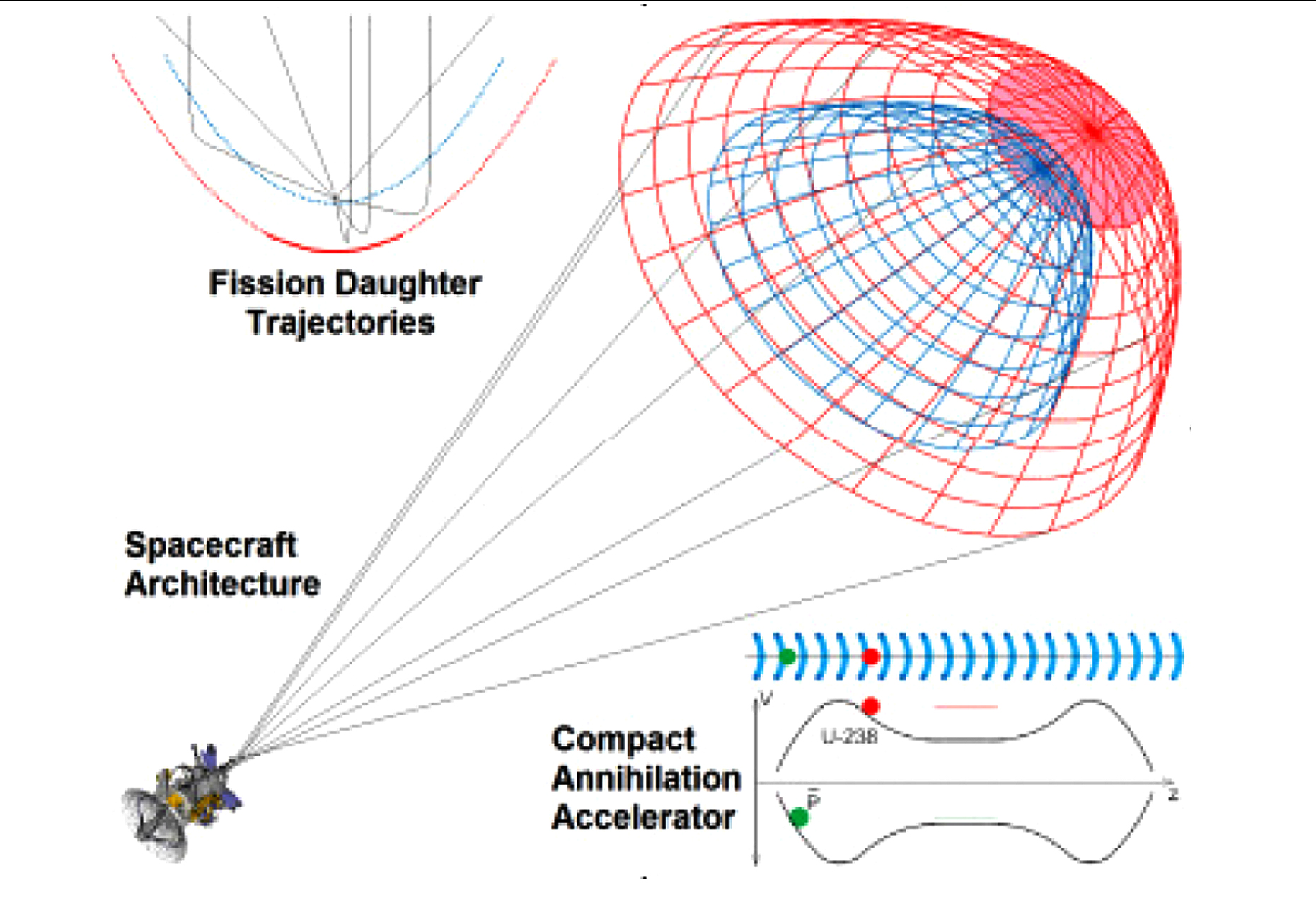Gerald Jackson
Hbar Technologies, LLC
Antimatter-based propulsion and power has emerged as a leading technology capable of enabling science missions to the exoplanet Proxima b. In stark contrast to other mission proposals involving beamed energy, this mission assumes prompt and continuous science return during the entire voyage, deceleration at Proxima Centauri, and decades-long exploration and scientific data return. Scientific data from Kuiper Belt and Oort Cloud object weekly flybys are anticipated starting within a few years of launch. The title of this proposal does not describe the focus of the technical work plan, rather summarizes an architecture wherein a ten kilogramscale spacecraft with robust propulsion and power capabilities performs an equally robust and prompt science mission. As a result, the majority of this proposed Phase I work is dedicated to tasks that strategically support the scientific and mission rationale of the proposed architecture.
Consistent with recent congressional and NASA guidance, this proposal assumes a peak spacecraft velocity of 10% of the speed of light. Once launched out of Earth’s gravitational well, the remaining spacecraft is composed of two stages. The first stage accelerates the spacecraft to 0.1c, detaches from the second stage, and performs a smaller perpendicular burn to deflect its trajectory toward the Alpha Centauri AB binary system for a flyby of that solar system. The second stage decelerates a scientific payload and provides power and support during a decades-long period of exploration.
Once decelerated, the scientific probe attached to the second stage would navigate the Proxima Centauri star system. The primary mission objective is orbital insertion around the confirmed habitable zone planet Proxima b, though other missions such as red dwarf observations and searches for other planets, asteroids, and comets would also be likely priorities. For example, given that Alpha Centauri AB has a combined mass approximately double that of our own sun, it is likely that Proxima Centauri orbits that binary within the Alpha Centauri AB Oort Cloud. As a result, cometary activity might be quite different from that of our own solar system. Such an unmanned mission will require unprecedented levels of redundancy, artificial intelligence, communication bandwidth, and hence onboard electrical power. Because these power demands represent such a small fraction of the required deceleration system power generation capacity, the propulsion systems are designed to efficiently generate electrical power and navigational thrust for decades of exploration.
In this mission architecture both the first and second stages are equipped with approximately one thousand, gram-scale chipcraft similar to those proposed by Breakthrough Starshot. These chipcraft are technically much more modest in every aspect, since they only operate for weeks after separation from either stage. These chipcraft are accelerated away from their originating stages in the direction transverse to the mission trajectory. The chipcraft then perform close flybys of objects on the time scale of one per week. Especially in the case of the Oort Cloud, a powerful LIDAR system is needed to illuminate, identify and track flyby candidates. This laser, which is proposed to also be the communication link back to Earth, is additionally used to accelerate the chipcraft and to periodically power (recharge) them via onboard chipcraft photovoltaics. These chipcraft also serve as planetary entry probes once in orbit around Proxima b. In addition, by judicious choice of wavelength the LIDAR system provides topographical imaging of the Proxima b surface even in the case of extensive cloud cover.
Charged particle, dust, and magnetic field sensors will map the composition of the interstellar void between our sun and Proxima Centauri. The similarly instrumented first stage will make the same measurements all the way through the Alpha Centauri binary solar system and beyond.































